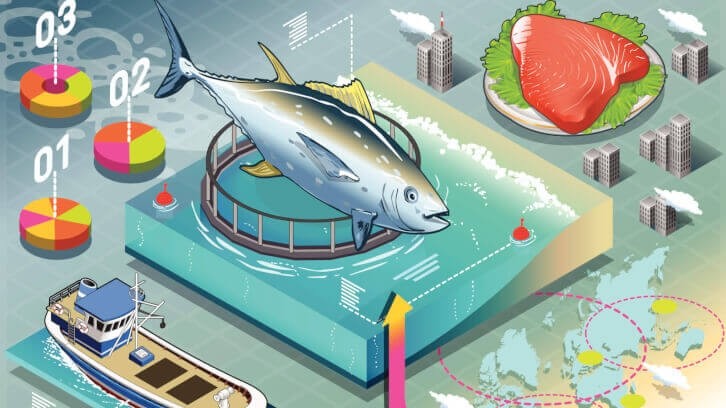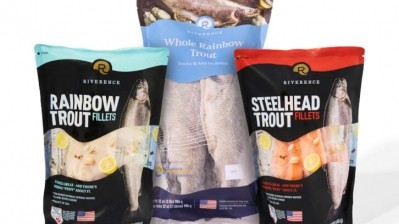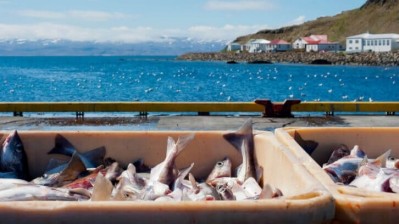A traceable seafood industry requires a globalized effort for standardized data collection

The reality of seafood supply chains, particularly around salmon and tuna, is a labyrinth of global operations that requires complex coordination and communications of different technology systems that make it difficult “to figure out where their product is coming from,” Bratager told FoodNavigator-USA.
“Traceability gets more difficult the more steps you add in a supply chain. … It is not uncommon for a fish to be caught in Alaska and then shipped over to Asia to be processed, then shipped around Asian distribution and then … make its way back to the US to get re-imported and then distributed through other channels, and sold at a retailer … [it is] really hard to track,” she explained.
Within the $87.25bn US seafood market, sustainability is increasingly important for consumers. Retailers and brands are responding by communicating sourcing transparency with third-party certifiers, such as Marine Stewardship Council or Seafood Watch.
According to data from FMI – The Food Industry Association, 64% of consumers say at least one aspect of sustainability impacts their seafood choice – with 32% saying that traceability to origins is important.
Lack of digital infrastructure hinders traceability
Yet, traceability in the first step of the supply chain is easier said than done, due to a lack of digitized infrastructure, like Wifi availability, on fishing boats in the middle of the ocean, for example, Bratager said.
“A lot of our technology is just not meant to be on a boat at all. And it makes it difficult because at that point, you are relying on paper records which can also get lost or damaged,” she clarified.
While blockchain “had a heyday maybe five or so years ago,” it is less popular because it is cost-prohibitive and the technology still misses important steps in coordinating data, Bratager said.
“Even blockchain cannot necessarily overcome some of those first mile challenges … or some of the supply chain complexity challenges. You still [must] have that coordination to be able to get the data and then get everyone to exchange it with each other,” she added.
How to create a globally harmonized seafood traceability standard?
Enter the Global Dialogue on Seafood Traceability (GDST), a non-profit foundation that is working to create a traceability standard for seafood products – and an organization that IFT’s GFTC has worked with for the last seven years, along with other philanthropic organizations, like the World Wildlife Fund.
Bratager said that the goal of the foundation is to “achieve traceable seafood so that we can stop having illegal, unregulated and unrecorded (IUU) seafood because that IUU risk is one of the biggest threats to the seafood industry.”
Removing the IUU risk requires a standardized traceability system that consolidates critical tracking events like where a fish was caught, who caught it, if the catcher has a license and if it was caught in non-protected areas, Bratager said.
“The output of all those conversations was the standard created by the GDST and this standard lays out all of the data elements that seafood supply chain actors need to collect to ensure that their seafood is traceable and also legal,” Bratager explained.
She added, “The benefit of having this standard is that it gives everyone in the seafood industry … an instruction manual or a common practice to say, ‘This is the way we are going to think about traceability. If we all do it this way, it is going to be cheaper and less complex than if we have a hundred different methods … trying to solve these problems.”
While the foundation works with international regulatory bodies that are also experiencing challenges with IUU and implementing different strategies to reduce it, the program is completely voluntary to join for companies.
“[Global regulatory bodies] at the moment think about traceability a little bit differently. They have different data elements that they ask for [and] different was of formatting data,” she explained.
IFT’s tech and supply chain tools align with GDST standards
While conversations are ongoing with regulating bodies, IFT developed solutions like its online Capability Test that verifies the ability of software to support GDST compliance, “which has been helpful for implementation because once all those solutions are able to format and share datasets in the same standardized way, they’re able to connect a lot more seamlessly without the need for costly customization,” Bratager elaborated.
For the supply chain, IFT offers a data collection analysis tool that directs a company to include necessary data points like a fish’s origins, and format it to the GDST standard.
“It gives you an automated analysis of where you are at on traceability, where your suppliers are at on traceability and maybe where you need to focus on the future,” she added.
Data collection is 'a significant investment'
The cost of implementing traceability practices continues to be the most significant barrier due to the time it takes to see a return on investment, which could be five years or more, Bratager said.
“Before that [five years], the value starts to outweigh the costs because there are a lot of costs associated with it, whether it is user training or the labor that you need to actually collect data, the sticker price of the technology solution, and then the long term IT costs and maintenance … it is a significant investment any time you are dealing with data collection … not just traceability,” she explained.
While Bratager did not state whether the cost of traceability practices will impact the consumer, she stated that processers bear the majority of the costs associated with data collection and sourcing from responsible suppliers; however, consumers may see a higher cost in premium seafood products that offer more origin transparency via QR codes on pack.
What are other challenges and opportunities facing the seafood industry?
With concerns over sustainability, climate change and evolving consumer preferences, the seafood industry is at a pivotal crossroads. Available on-demand, FoodNavigator-USA’s free editorial webinar, Future of Seafood, features industry experts who discuss the challenges and opportunities that lie ahead. Panelists include:
- Will Biggar, CFO, Local Coho
- Deniz Ficicioglu, CEO, Bettafish
- Steve Markenson, VP, Research & Insights, FMI – The Food Industry Association
- Moria Shimoni, CTO, Foresea Foods
- Deniz Ataman, Deputy Editor, FoodNavigator-USA
From plant-based seafood and aquaculture advancements to the promise of cultivated seafood technology, we examine the cutting-edge innovations reshaping the seafood landscape. Moreover, we explore the evolving demands of conscious consumers and the strategies that enable businesses to meet their expectations while ensuring environmental stewardship.
The webinar is on-demand and free with registration. Click here to register.



















